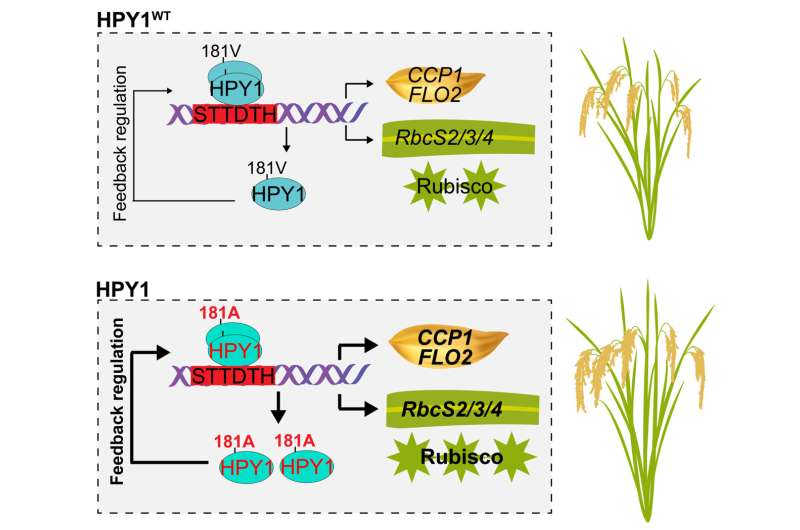This article has been reviewed according to Science X's editorial process and policies. Editors have highlighted the following attributes while ensuring the content's credibility:
fact-checked
trusted source
proofread
Gain-of-function allele of HPY1 coordinates source and sink to increase grain yield in rice

Rice is a primary staple crop for over half of the global population, and the continual enhancement of its yield holds significant significance in ensuring world food security. Therefore, achieving sustained increases in rice production has remained a major scientific challenge in the field of rice science research.
Physiologically, rice yield is jointly determined by photosynthetic capacity (source) and grain size/number (sink). However, current research predominantly focuses on either source or sink, with relatively limited studies addressing the synergy between the two.
Prof. Shaoqing Li (State Key Laboratory of Hybrid Rice, Wuhan University) led a team that obtained a large-grain, tall stature mutant through radiation mutagenesis. Subsequently, using positional cloning, they cloned a gene that concurrently regulates photosynthetic efficiency, grain size, biomass, and yield, naming it HPY1 (high photosynthetic rate and yield 1). HPY1 is a transcription factor derived from a transposon, highly conserved without any mutations across rice germplasm resources.
A SNP variation in the coding region of this gene leads to an alteration in an amino acid of the HTH (helix-turn-helix) domain's C-terminus, causing a change in protein structure and thereby increasing its DNA binding capacity. This ultimately triggers an increase in downstream gene expression, resulting in a phenotype of high photosynthetic efficiency, large grains, high biomass, and high yield.
Further analysis revealed that HPY1 enhances rice yield by synergistically improving both source and sink. HPY1 mutation enhances the transcriptional level of itself through feedback regulation. Then, HPY1 directly binds to source-related genes (RbcS2, RbcS3, and RbcS4, encoding Rubisco small subunits) to enhance their transcription, consequently increasing Rubisco content and activity, thereby raising photosynthetic rates and biomass.
Simultaneously, it directly binds to sink-related genes (CCP1 and FLO2, genes regulating grain size) and upregulates their transcription, leading to larger grain size. Ultimately, relying on the simultaneous enhancement of source and sink, rice yield is increased.
In summary, this study identified a high-yielding gene, HPY1, that coordinates source and sink to enhance rice yield. This discovery not only contributes to a deeper molecular understanding of source-sink coordination in rice but also offers an effective strategy for rice high-yield improvement.
The research is published in the journal Science Bulletin.
More information: Fengfeng Fan et al, Gain-of-function allele of HPY1 coordinates source and sink to increase grain yield in rice, Science Bulletin (2023). DOI: 10.1016/j.scib.2023.08.033
Provided by Science China Press




















